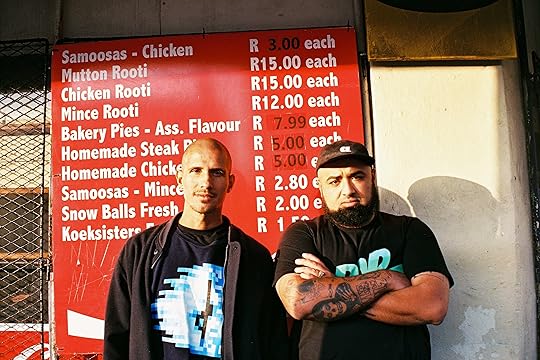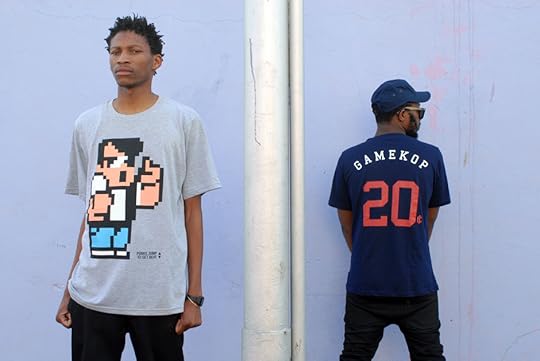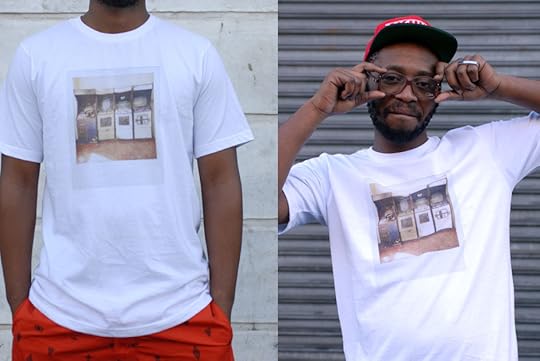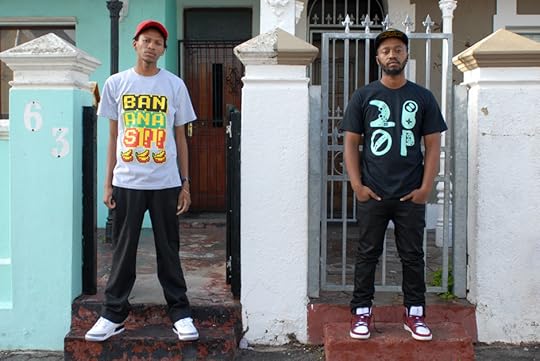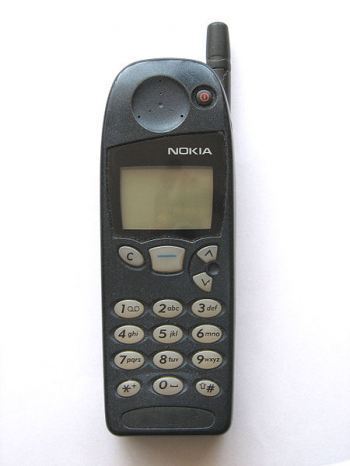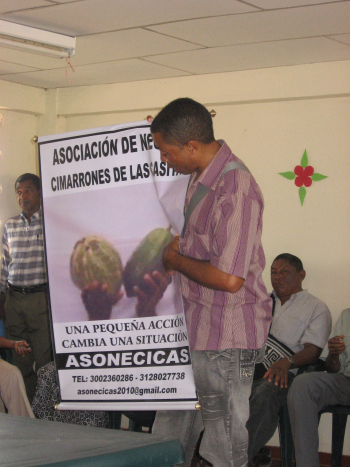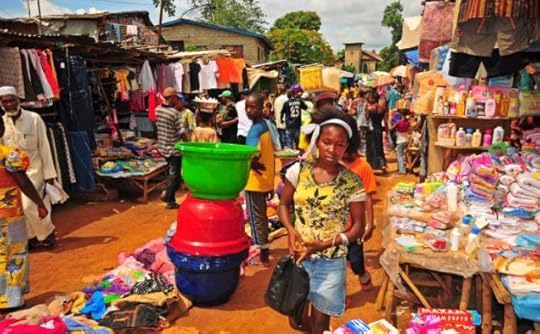Sean Jacobs's Blog, page 627
July 13, 2011
Baloji on Tour
Baloji is back in North America, and while we're a little late on the draw, you can still catch him in a few cities this summer. Two dates in Quebec (tonight and tomorrow night) and the final show in Los Angeles on July 16th.
Here.








Review: The Redemption of General Butt-Naked
"The Redemption of General Butt Naked" is an admirable attempt to paint a complex picture of a complex subject, the former Liberian child soldier, Joshua Milton Blahyi. While I found the film compelling, I couldn't help but feel skeptical of Blahyi's intentions, and by extension, the filmmaker's methods.
Blahyi's infamy originates in the Liberian civil war (for much of the 1990s and early 2000s) in which he became notorious as leader of a band of (literally) naked child soldiers who terrorized many Liberian people. He admits as much during Liberia's Truth and Reconciliation hearings that he was responsible for the deaths of over 20,000 people. Then during the war Blahyi found Jesus and disappeared from the battlefield. We don't really know what happened to him during this time.
The film follows Blahyi, now a Christian, as he goes around asking his victims to forgive him–including close associates (he shot a fellow child soldier in the legs for no reason, paralyzing him)–makes money as an itinerant preacher and flees to Ghana after threats to his life from people who doubt his sincerity.
At some level, Joshua is a victim of structural violence. His decision to take up arms was partly to survive during a period in which he, like most other Liberians, had little control over his choices. But the war also presented him with his first taste of power and fame through the manipulations of others.
There are points in the film where we are allowed to empathize with the man and his plight, but it is difficult to escape the feeling that the film just provides him with a vehicle to achieve celebrity and continue his path as a skilled manipulator.
A number of times it seemed like Blahyi was acting, to the point where some scenes even seemed staged.
The viewer gets the impression that Blahyi is using his position as a Christian minister to manipulate his victims and his past as wartime "General" to intimidate them into forgiving him.
A scene in a refugee camp in Ghana where a young man whose family was murdered by Blahyi's "Butt Naked unit," is very telling. The actions of the trembling man who probably watched Blahyi kill his entire family was heartbreaking to see as one could sense his fear at the sight of the burly Blahyi. He gave into Blahyi without much of a struggle, unlike the convincing Blahyi had to do with some of his other of his victims.
Joseph Blahyi comes across as the type of individual who thrives off of public attention regardless if that attention is for negative or positive behavior. In this era of reality television shows and global celebrity it's not hard to see that Blahyi would be easily seduced by the ability to generate fame for himself. (Let's not forget that through the popularity of an array of reality TV shows like Big Brother Africa, Africans, like everyone else, are very much aware of the power of film and television.) Anthropologist Danny Hoffman has suggested the youthful soldiers of Liberia and Sierra Leone were skilled media manipulators during their respective civil wars, and used international press to their own advantages.
Just doing a quick search on the Internet I found a personal web page that recounts Blahyi's life story, and has links to buy his auto-biography, which is also for sale in all of Monrovia's grocery stores. Charles Taylor, the former rebel leader now on trial in The Hague, is almost a household name especially thanks to Hollywood movies like Lord of War (that starred Nicholas Cage) or the presence of celebrities like Naomi Campbell on the witness stand at his war crimes trial.
The role of reconciliation is a key part of Blahyi's narrative (and the filmmakers' intentions) as well as key to family and community relations in this part of West Africa, so I can understand while forgiveness would take a prominent role in post conflict healing. That the infamous General Butt Naked received forgiveness is an important lesson for the many former youth soldiers who remain in Liberia, that they two may be able to be accepted back into society. But the reconciliation has to take place in the context of a community that is able to restore social order and with some form of restitution for victims (including civil claims against perpretators).
The film did not fully explore these issues (though it touches on it; it is too obsessed with Blahyi's own psychosis). We know that the Bishop who saved him played an important role in his transformation, but we don't see where Blahyi's influences and elders are today. Who is guiding Joshua Milton Blahyi? And if there is no one, how can we be sure he is serving anyone but himself? These are some questions I would have liked to see answered by the film, and perhaps add an exploration of why the TRC decided to not recommended him for prosecution.
Regardless the film was an important look at the recent history of Liberia and one of its most notorious characters. With steady trickle of similar films currently starting to emerge such as "Fambul Tok," "Pray the Devil Back to Hell," and "War Don Don" we will finally perhaps be able to get a more rounded hindsight view at a difficult time during West African history.
For viewing schedules and other information, check the film's official website.








Corner Shops and Arcade Games
Interview by Dylan Valley*
Cape Town based Anthony Smith and Bradley Abrahams' 2 BOP (above) videogame clothing label is inspired by corner shop arcade games and video game culture. They produce intriguing retro videogame references on understated but stylish street wear garments. Choosing often-obscure characters and typography that only real gamekoppe (game heads) and old schoolers will recognize (such as the blue fireball from Street Fighter,) they are building legions of followers globally. I chatted to Anthony about corner shops, gaming culture and creating imaginary friends.
The phrase "two bop" is Afrikaans slang for twenty cents. Why this particular name?
You used to use 20-cent pieces to play the old bootleg arcade games at corner stores in the hood here. So a 2 bop was a valuable thing, depending on how good you were, a 2 bop could mean hours of entertainment. It's also about being proud of our local language and culture.
How did the label come about?
I wanted to do a clothing label when I was at university but never had a strong enough concept and was too busy having fun to ever be productive. Thinking back, I used to make my own one off bootleg skate tee shirts (H-street, Powell Peralta) and hip hop (Public Enemy) shirts when I was growing up as it was tough getting nice stuff in South Africa back in the day so it's always been a part of me. I also used to hustle selling skateboards and accessories as a kid, so maybe that's where the business side comes from. 2 BOP also grew out of wanting to create a local brand that people would feel proud about, and that referenced their culture in some way. Also, I wanted to create stuff that I wanted to see people wearing. The label is almost like an imaginary friend, creating something that you wish existed, like what would blow your mind if you walked into a store and then on top of that you find out it's made locally by somebody just like you, not some multinational corporation. And of course, the video game obsession.
Was gaming a big part of your life, growing up?
Yeah it's been a huge part of my life growing up. As a little kid during the apartheid days we didn't have access to lots of comic books or cartoon shows or great public spaces to play in; so these corner store games became our playgrounds and windows into imaginary worlds. It was great getting access to this cutting edge game design, sound and graphics in a landscape that was quite bleak in terms of art and design. A bunch of my friends and I were equally obsessed with computer, console and arcade games but I remember feeling disappointed when I realised that the average kid wasn't as crazy about games as I was. Street Fighter 2 was a HUGE part of my life, that game was a full time not even extra mural but mural activity, spawning friendships, rivalries, crews, legends, champions and contenders. I don't know how many 2 boppe I dropped into that game. I stopped playing games seriously for a long time but always kept my eye on the industry and would play the odd highly acclaimed title but got back into playing a lot recently when Capcom did a great job by rejuvenating the fighting game scene with Street Fighter IV in 2009.
The corner café or "caffee" as we used to call it, with its game cabinets were very much a staple in South Africa over the past few decades, but with bigger shops and supermarkets swallowing the small "ma and pa" corner shop, do you see this kind of gaming culture dying out?
I honestly don't know, I thought that these machines would have died away by now but they seem to persist with companies maintaining these bootleg games. A lot of the machines don't run the original arcade hardware anymore but use PCs emulating the games but you wouldn't be able to tell. So as long as it's viable, I guess the stores will keep maintaining them. I think corner store culture in South Africa wouldn't be the same without them.
How would you describe the street wear/ fashion coming out of South Africa at the moment?
Young. I don't really follow what too many people are doing. I do see a few brands that are trying to find their voice, but also a lot of brands that are just doing the obvious stuff, following international trends, not really telling any stories. I'm in denial about being in the fashion industry as I'm self-taught and maybe that's why I don't follow that world too closely. There are some amazing South African designers though, my favourite being Shukrie Joel.
What's the best reaction you've had to a design/ garment thus far?
Ha ha, I've had some kids asking for autographs when they met us at a street wear convention. My business partner Brad is emotionally challenged so his response was to want to lie down on the ground and ignore them. We just had a laugh and spoke to them.
Two Bop Australia has just recently launched, what's next for you guys?
We're looking to get more international distribution. We sell a lot to North America and Europe through our online store but the shipping from the Southernmost tip of Africa for single items is pricey so we'd like to get some good distribution over there.
For all things 2BOP (and to buy merchandise) visit their site.
* Photo Credits: Antoinette Engel (first picture at the top) and Rachel Granofsky for 2 Bop. This marks the beginning of Cape Town-based Dylan Valley's collaboration with AIAC.








July 12, 2011
Mobile phones and the new 'digital divide'
By Brett Davidson
Mobile phones are often touted as the solution to the digital divide, and the answer to a range of development problems. There is undoubtedly a huge growth in mobile phone access in the developing world, and the possibilities this presents are indeed exciting (innovations in mobile banking and mobile health are just two areas where new services are transforming people's lives).
But these positive developments should not blind us to a range of problems and concerns (such as research in poor communities showing that expenditure on mobile phone use often comes at the expense of other needs, such as food). Two recent articles highlight the fact that the digital divide is very much still with us, and in fact new kinds of divides may be opening up.
In a paper published by Audience Scapes, Gayatri Murthi acknowledges the unprecedented proliferation of mobile phones in the developing world (the developing world's share of mobile phone subscriptions increased from 53% in to 73% in 2010; mobile phone subscriptions increased by 16% in the developing world last year, as opposed to 1.6% in the developed world) – but she goes on to show that gender and income disparities mean that by no means everybody is able to reap the benefits of the growth in mobile penetration.
In South Asia, Africa, and the Middle East, men are much more likely to have access to cell phones than women. In Sub-Saharan Africa, where the 'mobile divide' is slightly smaller than in the other two regions, a woman is 23% less likely to own a mobile phone than a man. Unequal educational opportunities present another divide. For example, 93% of Kenyans with formal education had access to a mobile phone, as opposed to 50% of those without. Since a higher proportion of men than women have access to formal education, this reinforces the gender imbalance.
Furthermore, according to Murthi, women are less likely to receive information via mobile phone, relying more in interpersonal communication. This challenges assumptions that new technologies are in and of themselves, going to democratize the information environment.
In addition to gender, Claire Melamed, a self-proclaimed 'technological optimist' highlights some other divides, in a recent blog post on Global Dashboard.
Firstly, there's a geographical divide: while excellent signal coverage in the most populated areas, there are vast expanses of almost every African country where there is no signal at all. Secondly, a literacy divide: even when people have mobile phones they may not be able to take advantage of access to a range of information services if they cannot read (despite the existence of projects that use mobile phones to promote literacy). And finally, there's a financial divide: for example she says, despite the advance if cheap mobile banking, in parts of Kenya making a money transaction using the MPESA mobile banking service costs the same as a bag of maize.
These two articles reinforce the fact that as exciting as the advances in mobile technology are, they're not a 'one size fits all' solution for promoting development and democracy – and as much as they may help us solve some problems they are also creating new divides and inequities.








Independence / July 12th, Sao Tome
Conjunto frica Negra's glory has faded, but there's plenty more where that came from in Sao Tome. Happy Independence Day, Sao Tome.
Africa Negra:

Haylton Dias:

Ito Doss:

* Thanks to Tom for the Conjunto Africa Negra reference.








July 12th, Sao Tome
Conjunto frica Negra's glory has faded, but there's plenty more where that came from in Sao Tome. Happy Independence Day, Sao Tome.
Africa Negra:

Haylton Dias:

Ito Doss:

* Thanks to Tom for the Conjunto Africa Negra reference.








Negros Cimarrones
By Caitlin Ringwood, Guest Blogger
I just returned from a weeklong trip to La Guajira, a department in Colombia located in the northeastern region of the country on the Caribbean coast. La Guajira is home to El Cerrejón, the world's largest open-pit coal mine. El Cerrejón was constructed in 1981 as a joint venture between the Colombian state and Exxon. It is currently owned by three international mining firms: BHP Billiton, Anglo-American PLC and Xstrata PLC.
In 2010, El Cerrejón produced 40 million metric tons of coal, and exported 99% of it for consumption in the United States and Europe. In the 32 years that El Cerrejón has been operating in La Guajira, the local population mainly composed of Afro-Colombians, indigenous and campesinos, has been embroiled in a struggle against forcible displacement, human rights violations by paramilitaries and the pollution of natural resources.
The initial construction and expansion of El Cerrejón saw the Colombian government working in conjunction with the corporation to forcibly displace and seize collective land holdings from Afro-Colombian communities who subsisted on lands central to El Cerrejón's operations. Most infamously was the Afro Colombian village of Tabaco, whose land was expropriated and village demolished on the 9th of August 2001 for the expansion of mining operations. Most of the former residents of Tabaco took refuge in the neighboring village of Albania, or made their way to cities adding to Colombian's strikingly high percentage of internally displaced persons. An overwhelming percentage of internally displaced people are Afro Colombian.
Yet, in the face of a globalized economy whose effects are often most regressive on rural, politically marginal communities, the spontaneous mobilization of Afro Colombians in La Guajira is something to pay attention to. While the organization of diasporic communities began in La Guajira, their vision is anything but local. Communities affected by mining operations are beginning to organizing based on common racial histories, often using the words "descendientes" referring to descendents of slaves, and "cimarrones" referring to maroon slave communities, in their organization titles. These words reference black identity in Colombia, based in a common history of marginality, displacement and resistance.
For the last 10 years, Aviva Chomsky, a professor of History at Salem State University in Massachusetts. has been working with Afro Colombian communities affected by mining operations in La Guajira to craft a transnational solidarity framework around securing socially and environmentally responsible mining practices, greater transparency when dealing with communities and fair and adequate relocation and compensation for communities who have been previously displaced by El Cerrejón. The framework is undergirded by the idea of globalization, the same phenomenon that has rendered so many Afro Colombians displaced.
The transnational framework works to draw international, public attention to the various ways irresponsible mining has impacted the lives of those individuals from La Guajira, and to assert public pressure for change.
Dr. Chomsky explains:
Multinationals have a product to sell, and they also have an image to sell. They have to keep their shareholders and their customers happy. One of the main goals of the international solidarity campaign has been to try to bring the voices of the multinationals' victims out into the public sphere. When their voices can be heard, the multinationals lose their monopoly on information and opinion, and when they feel the public relations risk is when they start acknowledging the rights of those that they would rather just ignore, like the communities that have been destroyed and displaced by the mining operations.
Historically the United States has constructed economic and political relationships with Colombia. This gave it tremendous access to natural resources like coal, gold and lumber, and as a result wealth. For example, historians cite the construction of Yankee Stadium as being made possible via profits from logging in the Chocó region of Colombia.
* Caitlin R. Ringwood is a Master's Candidate in the Graduate Program in International Affairs at The New School in New York City.








July 11, 2011
Music Break / Khuli Chana
Tomorrow Is Waiting For You (and so is Coca-Cola)

As a child I remember that each bright, hot morning in Alexandria my father would listen for the call of our neighborhood baker, run down the stairs and come back with the most amazing pit-oven baked pita bread. I also recall that he would always stop by the hilu (sweets) shop on the way back – that's where glass bottles of Coca-Cola and Pepsi were cleaned, refilled and then returned to their owners. Over fūl and bread – the traditional breakfast of the Egyptian working class (cheap and filling) – he would drink a Coca-Cola. Soft drinks like Coke and Pepsi were (and are still) a staple in Egypt. Inexpensive, exceedingly sweet, non-alcoholic and perhaps the one thing more visible on the streets, television and daily life than Hosni Mubarak.
Coca-Cola and Pepsi Cola have enormous bottling plants in Egypt, and they commit the same offenses there as elsewhere – water hoarding, environmental contamination, and extreme abuse of workers. But their products remain successful in the same countries – especially those, like Egypt, where the middle-class (the subject of the new "pro-revolution" adverts linked above) have largely been able to ignore Egypt's widespread industrial and agricultural labor struggles. Even outside of the middle-class, Coke is cheap to buy and thus an affordable luxury – the bottling plants in Egypt join others that still allow glass bottles to be returned and refilled in order to keep prices – for production and consumers – low. Things are changing, it seems, with more mainstream attention being paid to labor issues by the national and international media. But while the revolution persists – for labor rights, for land rights, against the military regime and against neo-liberal interference – Coca-Cola and Pepsi join Vodafone by casually erasing their contribution to Hosni Mubarak's dictatorship and rewriting the narrative in their favor.
University of Arkansas Professor Ted Swedenburg has more at his blog, here.








The most heard phrase on the streets of Monrovia
Liberian music is going through a creative explosion. Cultural singers are taking to the studio and creating an exciting, high-energy, danceable sound. Young urban folks have invented a local Hip-Hop style called Hipco which talks to their reality, and reinvents Liberian identity for a new generation. Sometimes the two meet with exciting results. With a wealth of creativity in the Liberian music scene, what the artists lack is exposure. For the next few weeks I will be posting on Liberian music while helping to launch a Liberian music blog.
"Dumyarea" means "that's my area" in Liberian English. It is a common phrase in the market where sellers yell it out to stake their place. Today, it is the most heard phrase on the streets of Monrovia, and the name of the song most played throughout the country. And when I say most played, I mean there is no escaping, any time of day.
Liberian singer, Junior Freeman (and his partner African Soldier?) has taken the country the storm this election season. So much so that the president used his hook in the launch of her re-election campaign. He performs a style called Gbema which is what happens when music from Liberia's ethnically diverse interior meets computer-based music production software.
Beyond the infectious rhythm, the genius of the song is in the simple yet socially relevant lyrics, that speak to all walks of life. "Everybody got they're own area… some people aim is to be Senator… some people area is to go up and down the street." It's the kind of populist anthem that everyone can get down to, and whenever it comes on, people do. This unity through music and culture is really a sight to behold in a fairly divided society.








Sean Jacobs's Blog
- Sean Jacobs's profile
- 4 followers




